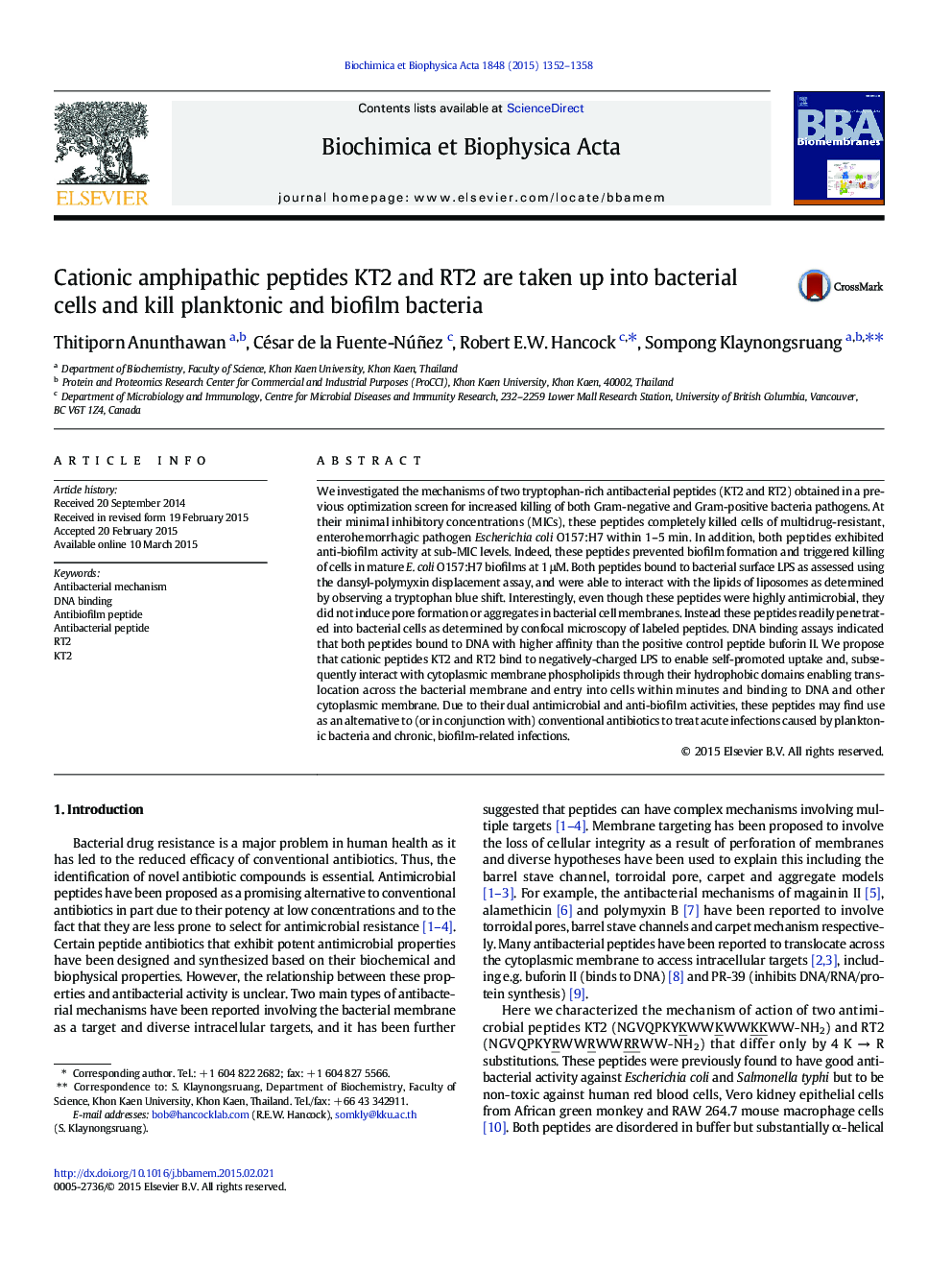| کد مقاله | کد نشریه | سال انتشار | مقاله انگلیسی | نسخه تمام متن |
|---|---|---|---|---|
| 1944108 | 1053179 | 2015 | 7 صفحه PDF | دانلود رایگان |

• RT2 and KT2 completely killed cells of E. coli O157:H7.
• RT2 and KT2 prevented biofilm formation of E. coli.
• RT2 and KT2 readily penetrated into E. coli cells.
• DNA binding assays indicated that RT2 and KT2 could bind to DNA.
We investigated the mechanisms of two tryptophan-rich antibacterial peptides (KT2 and RT2) obtained in a previous optimization screen for increased killing of both Gram-negative and Gram-positive bacteria pathogens. At their minimal inhibitory concentrations (MICs), these peptides completely killed cells of multidrug-resistant, enterohemorrhagic pathogen Escherichia coli O157:H7 within 1–5 min. In addition, both peptides exhibited anti-biofilm activity at sub-MIC levels. Indeed, these peptides prevented biofilm formation and triggered killing of cells in mature E. coli O157:H7 biofilms at 1 μM. Both peptides bound to bacterial surface LPS as assessed using the dansyl-polymyxin displacement assay, and were able to interact with the lipids of liposomes as determined by observing a tryptophan blue shift. Interestingly, even though these peptides were highly antimicrobial, they did not induce pore formation or aggregates in bacterial cell membranes. Instead these peptides readily penetrated into bacterial cells as determined by confocal microscopy of labeled peptides. DNA binding assays indicated that both peptides bound to DNA with higher affinity than the positive control peptide buforin II. We propose that cationic peptides KT2 and RT2 bind to negatively-charged LPS to enable self-promoted uptake and, subsequently interact with cytoplasmic membrane phospholipids through their hydrophobic domains enabling translocation across the bacterial membrane and entry into cells within minutes and binding to DNA and other cytoplasmic membrane. Due to their dual antimicrobial and anti-biofilm activities, these peptides may find use as an alternative to (or in conjunction with) conventional antibiotics to treat acute infections caused by planktonic bacteria and chronic, biofilm-related infections.
Figure optionsDownload high-quality image (102 K)Download as PowerPoint slide
Journal: Biochimica et Biophysica Acta (BBA) - Biomembranes - Volume 1848, Issue 6, June 2015, Pages 1352–1358